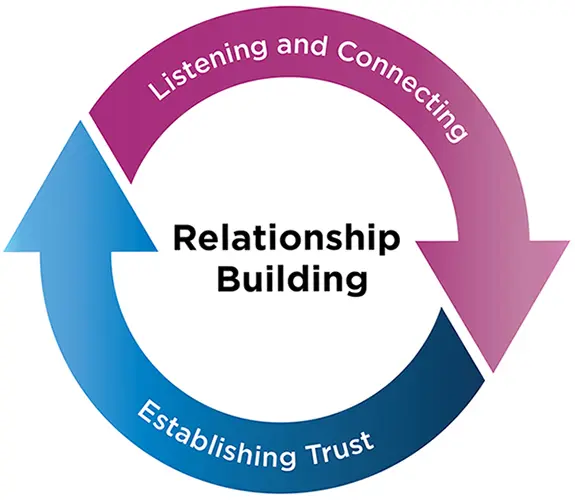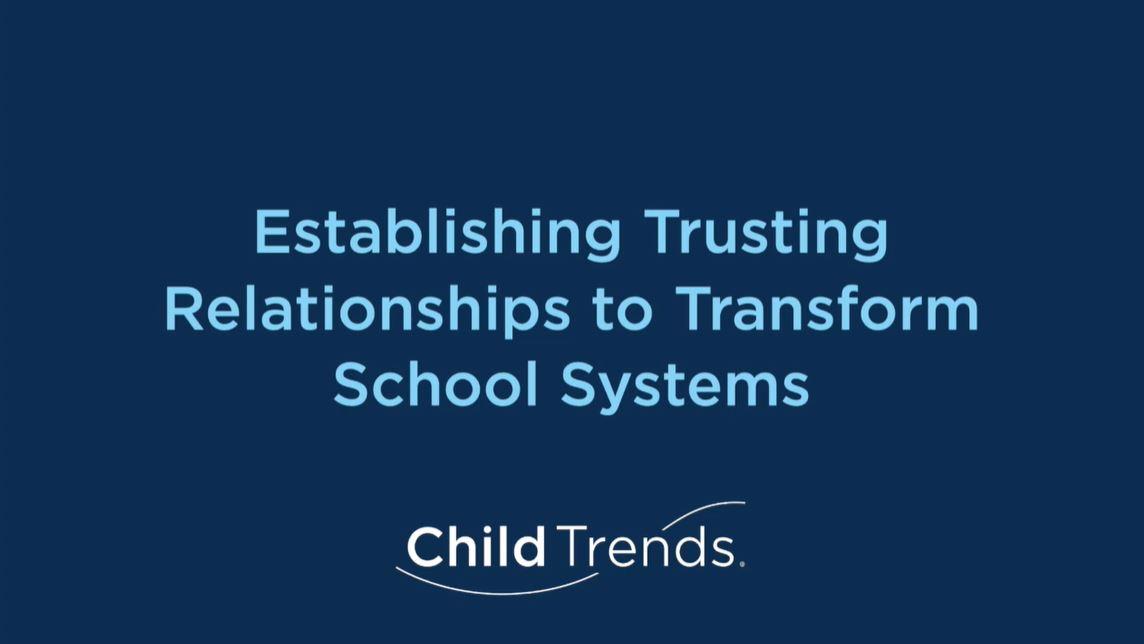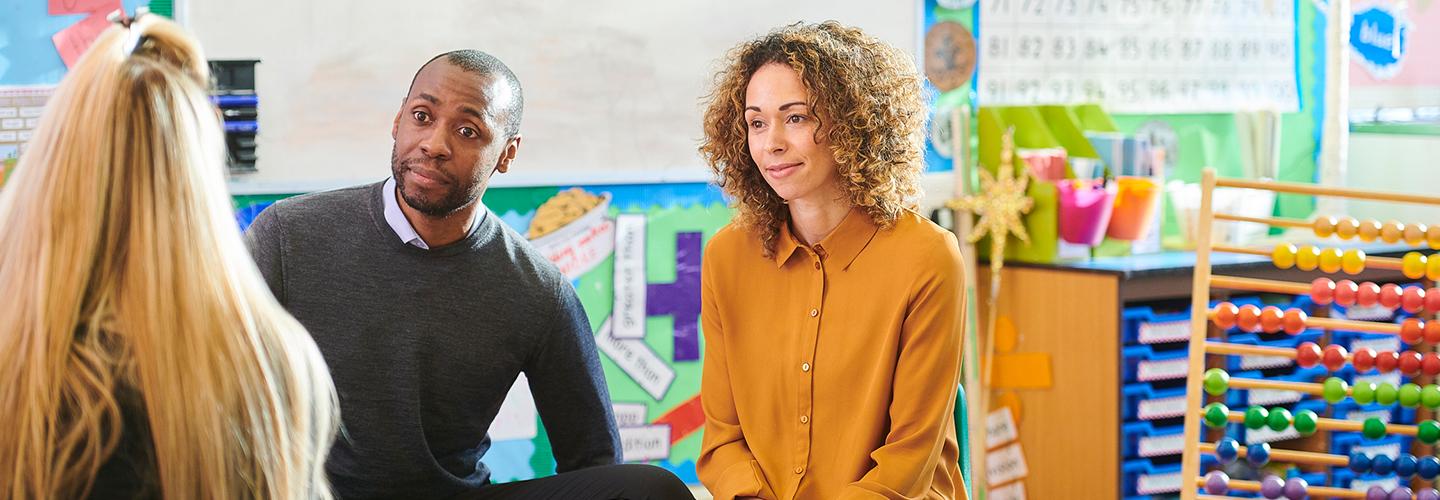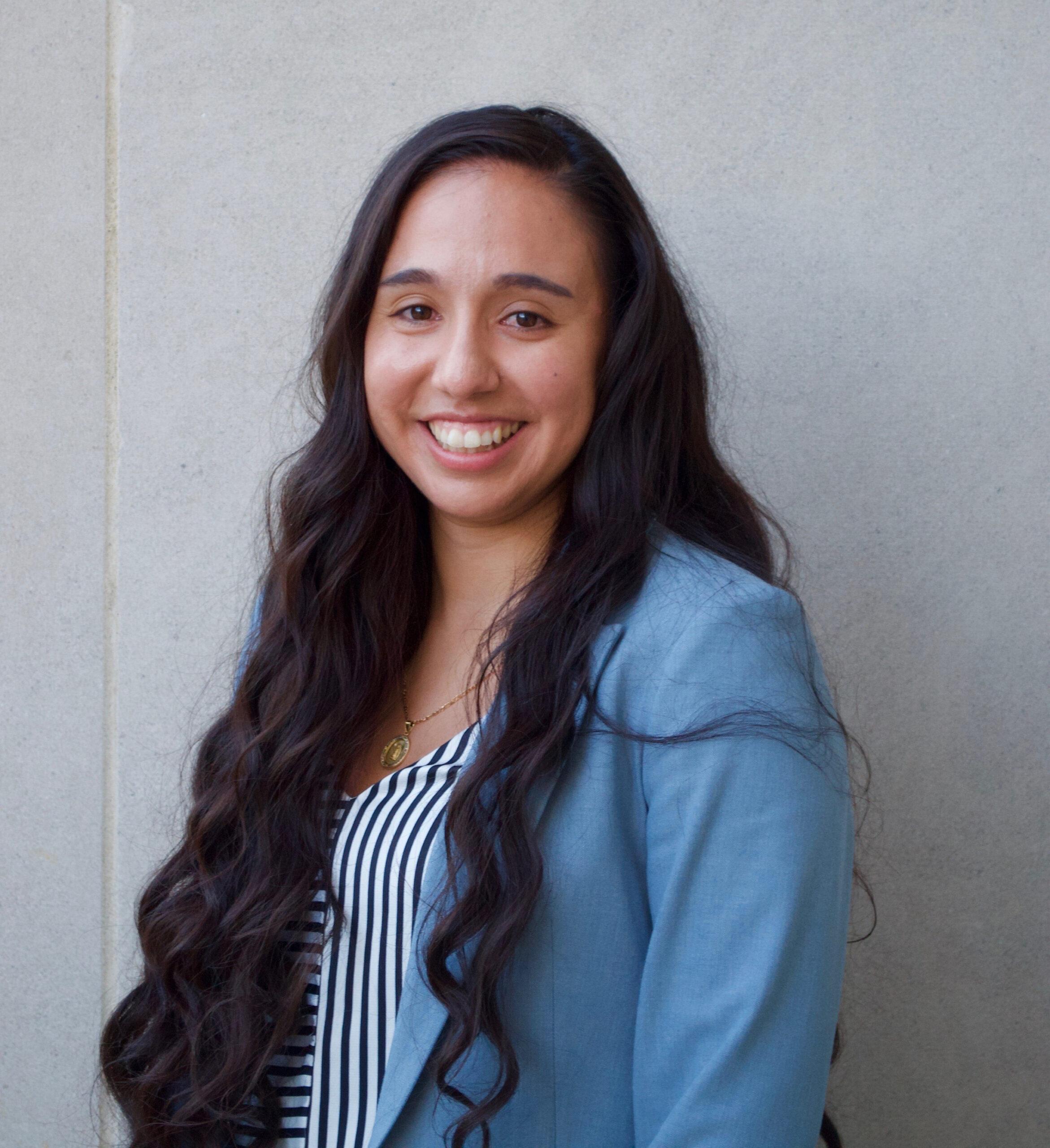Authors
Ja’Chelle Ball, Cassidy Guros, and Alyssa Scott contributed equally to writing this blog
This blog series from the Innovation to Evidence Project team at Child Trends aims to help practitioners, policymakers, and researchers transform K-12 school systems to better meet the needs of students, families, and communities. This blog focuses on building relationships with key K-12 education stakeholders such as students, teachers, families, school leaders, and school staff.
Click below to listen to this blog post:
Relationships are the foundation of any school system transformation because students, teachers, families, and communities need to feel seen and heard for transformation to occur.
Imagine: You’re a parent at a family event meeting your child’s teacher, Ms. Carmichael, for the first time. You are nervous and you want to make a good impression. You start by saying, “Hi, my name is Anna. I am Joe’s parent, so happy to meet you!” Ms. Carmichael responds just as excitedly as you and asks about the hopes that you and Joe have for the new school year. After learning about you and Joe, Ms. Carmichael shares how well Joe is already doing in class and highlights how she plans to support Joe in achieving your goals. Ms. Carmichael then invites you and Joe to the next family event at the school.
In this example, you—a policymaker, practitioner, or researcher who works on educational issues—have been asked to imagine being Anna, the parent of a student, Joe. The teacher, Ms. Carmichael, listened to this parent, asked about the hopes she shared with her son, and began to establish trust by sharing how she—as a teacher—would support Joe. As shown in the figure, relationship building requires two symbiotic actions: (1) listening and connecting and (2) establishing trust.
Building Relationships: Listening, Connecting, and Establishing Trust

Relationship building is based on a universal desire to be seen and heard. Listening and connecting involves acknowledging and elevating those with whom you work—i.e., your stakeholders—as experts. Your stakeholders (e.g., students, teachers, families, school leaders, and school staff) have unique points of view and experiences about what’s happening in the school system. For this reason, it is important to create spaces for them to continually voice their concerns and needs. Examples of these spaces can be created in many ways. The following video interview showcases how a school district created a space for the communities, families, and staff members who are part of their schools.
 Play video
Play videoBuilding relationships is strengthened by establishing trust. Trust is not easy to establish, especially for communities that have been harmed by school systems. Your stakeholders may be cautious of who they trust because of past experiences with your school system. To establish trust with stakeholders, start by clearly communicating your intentions and needs and explicitly asking about theirs. Based on these conversations, you can find the common ground that underlies a trusting relationship. It is crucial to not rely on assumptions about intentions and needs, which is why it is important to be communicative and curious.
So, what are some ways that you can establish and maintain trust?
- Determine which stakeholders you want to meaningfully engage, and why. Transparency is important when building trust, so being able to clearly explain who you want to work with and why will help you put together a team with diverse perspectives.
- Acknowledge structural and systemic inequities. It is important to acknowledge systems in which White teachers and leaders are the majority, as this representation could reinforce longstanding inequities—especially when educators’ demographics do not match those of the students they serve.
- Develop norms and expectations for how you and your stakeholders will engage. When challenges arise, be transparent, communicative, respectful, and open-minded with your stakeholders.
- Continually acknowledge your stakeholders’ expertise and power. Check in regularly with your stakeholders to ensure their needs are being met.
- Be willing to adjust your goals and be responsive. When goals are not being achieved, work with your stakeholders to adapt to better serve their needs.
Relationship building is a key part of transforming school systems, but it’s also an ongoing and evolving process. An intentional approach to listening, connecting, and establishing trust can be rewarding for you and your partners alike.
Resources Focused on Relationship Building
The following resources are intended to help you build relationships with your stakeholders:
- Toolkit of Resources for Engaging Families and the Community as Partners in Education (developed by Regional Education Laboratory Pacific, Institute of Education Sciences, 2016)
- Building Partnerships: Guide to Developing Relationships with Families (developed by the Office of Head Start, U.S. Department of Health and Human Services, 2022)
- Unlocking Potential: A Tool to Support Ongoing, Meaningful Engagement with Stakeholders (developed by Meg Boyd, Oregon Department of Education, 2019)
- Ohio Local Stakeholder Engagement Toolkit: A Guide for District and School Leaders (developed by the Ohio Department of Education, 2019)
- Building Trust in Communities (by Joyce Hoelting, University of Minnesota Extension, 2022)
- How to Build Trust in Schools (by Vicki Zakrzewski, PhD, the education director of the Greater Good Science Center, 2015)
- Why Building Trust in Schools Matters (by Jade Eckels, City Year Director of Research and Strategy, 2023)
Suggested citation
Ball, J., Guros, C., Scott, A., Aceves, L., & Holquist, S.E. (2023). Establishing trusting relationships to transform school systems. Child Trends. DOI: 10.56417/7023q7506u
© Copyright 2025 ChildTrendsPrivacy Statement
Newsletter SignupLinkedInYouTubeBlueskyInstagram




